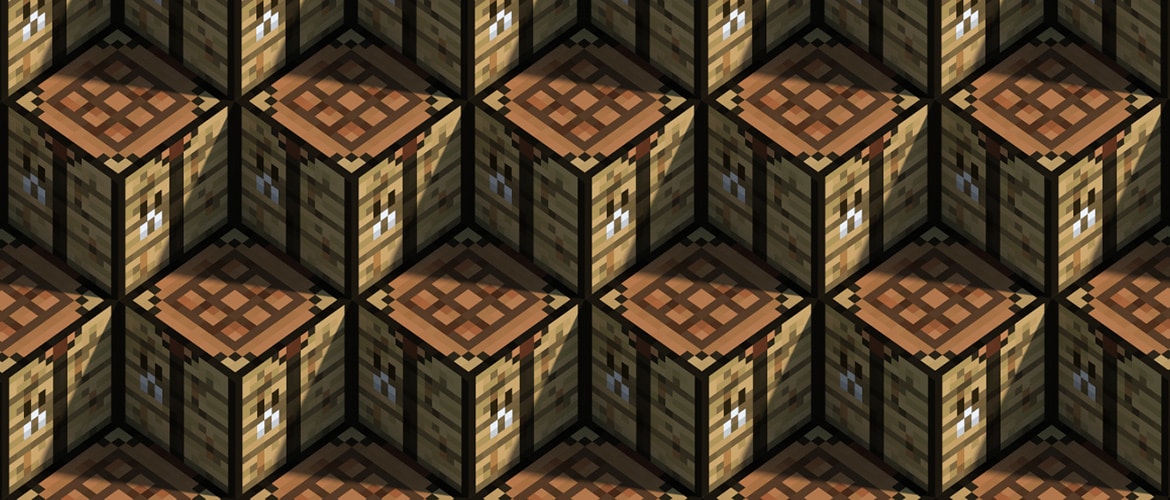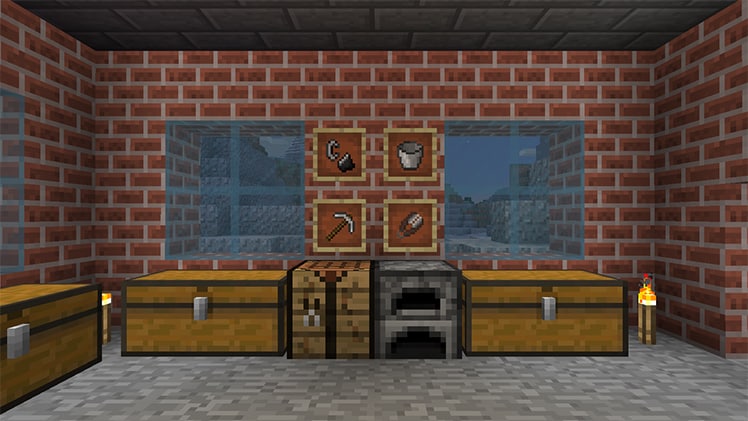Block of the Week: Crafting Table
It’s why the game is called ‘Minetable’! Wait, that doesn’t sound right...
You won't get far in Minecraft without a crafting table. It's the block that turns wood into tools, cobblestone into furnaces, and little chunks of melon into delicious whole melons. Mmmm I love melon. In fact, I’m off for a quick melon break. Brb!
...yum, sorry about that! This week’s block is the one that makes almost all other blocks possible - stand up and take a bow, Crafting Table!
Crafting, despite being literally half of the name of the game, wasn't actually a part of Minecraft's earliest versions. In fact, it took a total of 258 days from the release of the first numbered version to being added in version 0.31 on 29 January 2010. When crafting was added, the crafting table was too - though it was first called a workbench.
Among the earliest items to be craftable were iron blocks, gold blocks, picks, swords, chests, signs, torches and slabs. As more blocks were added to the game, more recipes were implemented - including shapeless recipes in Beta 1.2. But it took until the most recent version of Minecraft, 1.12, to include a way to see recipes in-game. We’re still not sure how you guys remembered all the recipes before that. Well done!
One recipe that pretty much everyone memorises from the first time they play Minecraft is how to make a crafting table. It's four planks arranged in a square, of course. You'll also find crafting tables occasionally in the wild - in village libraries, witch huts and igloos. Who knows what those witches are crafting?
Crafting isn't the only use for crafting tables, of course. You can also use them as furnace fuel - smelting 1.5 items per block. Or alternatively, you can use crafting tables as a relatively cheap building material, making an entire house out of crafting tables so you can always find one when you need one. They make quite nice flooring, I've always thought.
We get the word "craft" from the Old English "cræft", which meant strength or excellence, which in turn came from the Proto-Indo-European word "kraftaz" (meaning “power”) - which dates all the way back to the invention of the wheel and the domestication of the horse. In Sweden, where Minecraft is made, "kraft" still means "power". Minepower!
The first crafting tables, though, probably came a lot later than the wheel. We know the ancient Egyptians cut notches into rocks to brace objects, while the Romans have some of the earliest examples of what we'd recognise today as a workbench - albeit pretty low to the ground.
It's clear that crafting tables have been around for thousands of years in one form or another. And we'd bet that they'll be still in use thousands of years in the future. If that doesn't make them worthy of a block of the week, then I don't know what does. Are we done here? Great! I’m off for another melon binge. See you next week!
- Written By
- Duncan Geere
- Published
Block...Block...Block...


